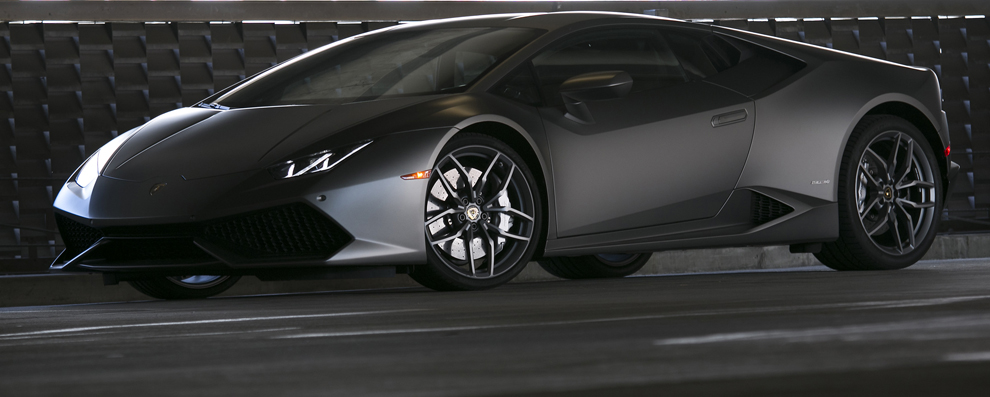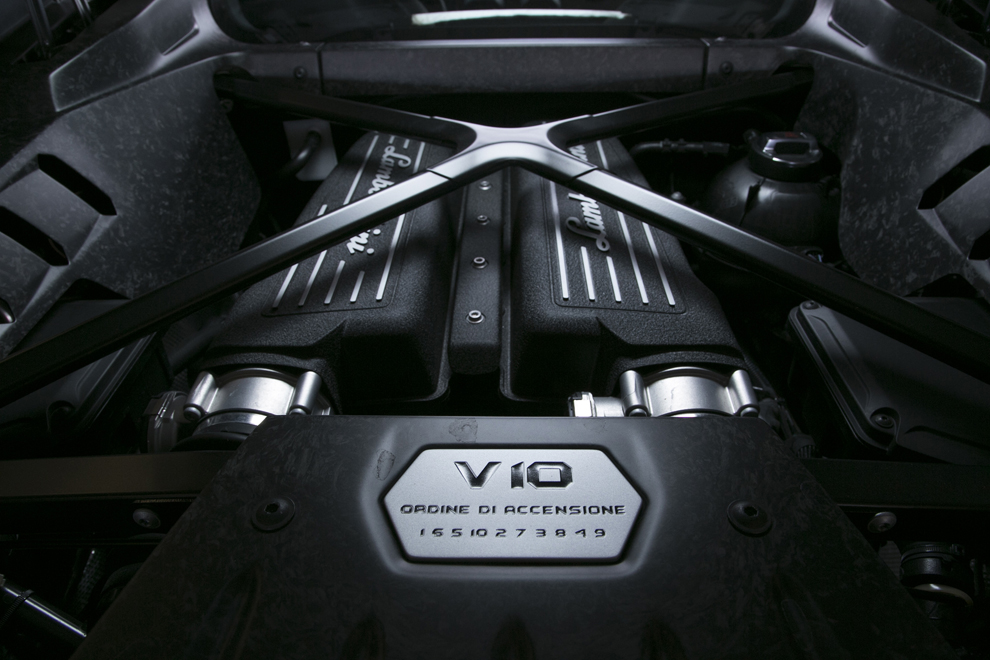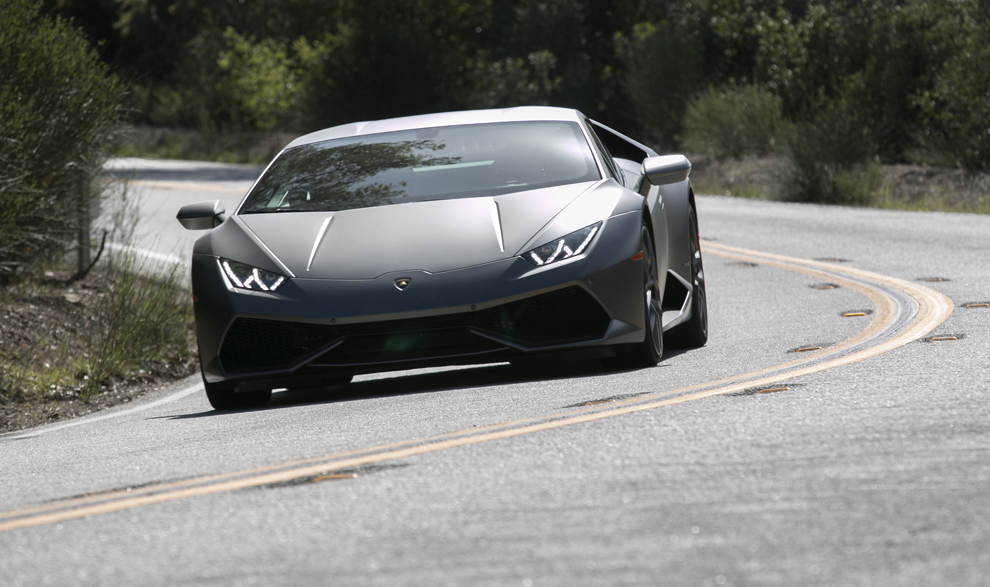Like the weather phenomenon from which it takes its name, Lamborghini’s Huracan is as fast, sleek and sudden as the wind.
The supercar was introduced in 2015 and is marketed by Lamborghini as its entry level, more accessible, daily driver.
Yeah right! It costs more than $250,000, and goes more than 200 mph.
Even at that price, sales of the rear-engine Huracan are a big factor in Lamborghini’s success these days. The company reported a 28 percent bump in global sales in 2015. In the U.S., the Italian luxury sports car brand sold a record 1,009 cars.
Electronically limited to 200 mph for safer road driving, the Huracan jets from zero to 60 mph in 3.1 seconds. And 100 mph happens very soon in this car.
Though the Huracan is laden with ultralight carbon fiber modernities, it achieves its performance specs in a beautifully old-fashioned way. This is a mid-engine sports car powered by a rather analog V-10 naturally aspirated 5.2-liter engine that makes 610 horsepower and 413 pound-feet of torque.
That power is made tractable by all-wheel drive, sophisticated adaptive steering technology and a magnetic suspension system known colloquially as magneride. These combine with the electronic stability control and massive carbon ceramic brakes to create a fluid, almost flawless driving experience.
On narrow, twisting turns, I found the cornering crisp and precise. Even in the strada, or street setting, the suspension is stiff and throttle response is immediate.
These values rise dramatically with the shift to “sport” or the closed-course mode, corsa. So do the shift points.
So does the mufflergrowl, which even in strada mode produces a startling early morning wake-up call for the neighbors. The engine also begins sending more torque to the rear axle.
As is generally the case with supercars, I found the weakest link was the driver. No matter how fast or hard I drove the Huracan, no matter how tight the turn or difficult the maneuver, the car was always willing to do much more than I was willing to demand.
On the open road, the Huracan’s “daily driver” qualities seem less convincing. That mid-engine power plant is inches from the driver’s head. It’s hot and loud – like, airplane cabin or wind tunnel loud.
The otherwise delightful sound system and Bluetooth capability lose some of their utility on the freeway. And the driver’s seat, though generously adjustable, is really a race seat. This may be a daily driver, but it’s no grand touring car, a point made more evident by its limited storage capacity.
Even with the optional $6,900 hydraulic nose-lifting technology – push a button, even when the car is in motion, and the front end rises several inches – daily driving may include a lot of chin scraping.
As for amenities, Lamborghini has included only the essentials as standard equipment, and not too many more as options. This model was kitted out with a $3,200 navigation system, a $3,900 rear-view camera (very useful for backing up in a massively expensive vehicle with such poor side and rear visibility) and sultry Alcantara interior upholstery.
But it may be the only vehicle sold in America that doesn’t include a single cup holder, and the only one that comes with a pair of leather gloves, along with a rudimentary tool kit, so you don’t muss up your mitts making roadside repairs.
Lamborghini has positioned the Huracan as its entry-level model, but the entrance fee is pretty steep. The base price is $241,995; the model I drove, $297,275. That price includes the $1,300 “gas guzzler” tax.
Send questions/comments to the editors.





Success. Please wait for the page to reload. If the page does not reload within 5 seconds, please refresh the page.
Enter your email and password to access comments.
Hi, to comment on stories you must . This profile is in addition to your subscription and website login.
Already have a commenting profile? .
Invalid username/password.
Please check your email to confirm and complete your registration.
Only subscribers are eligible to post comments. Please subscribe or login first for digital access. Here’s why.
Use the form below to reset your password. When you've submitted your account email, we will send an email with a reset code.